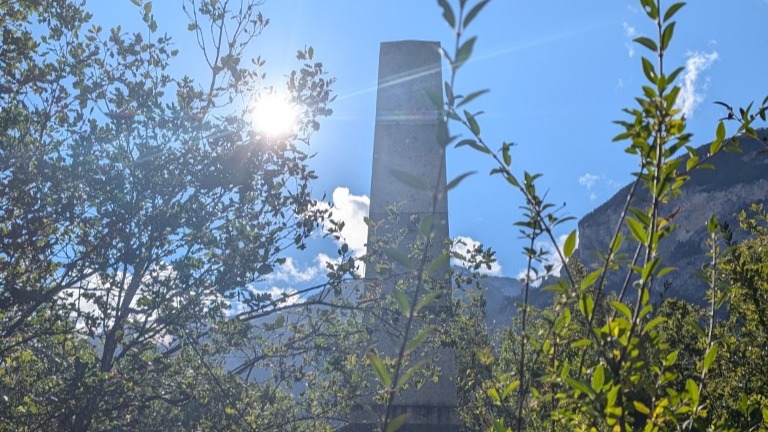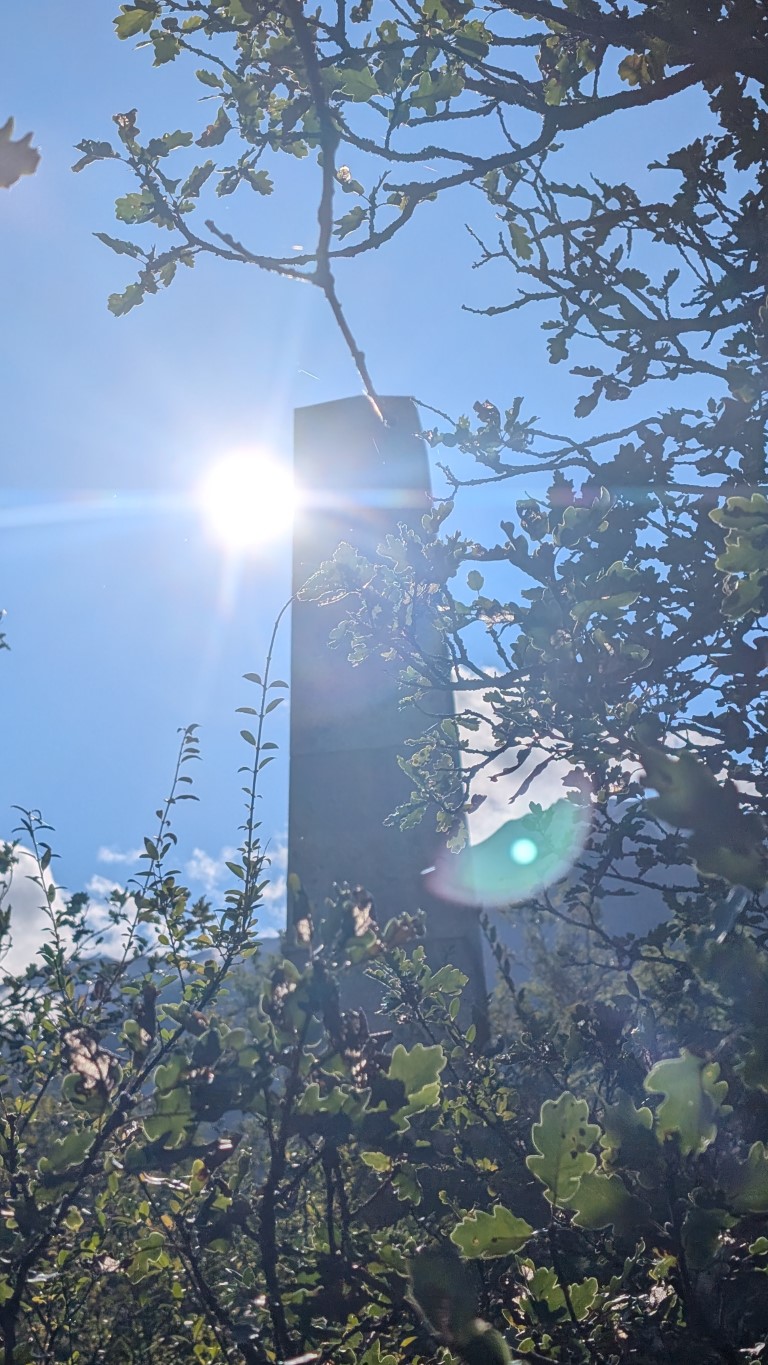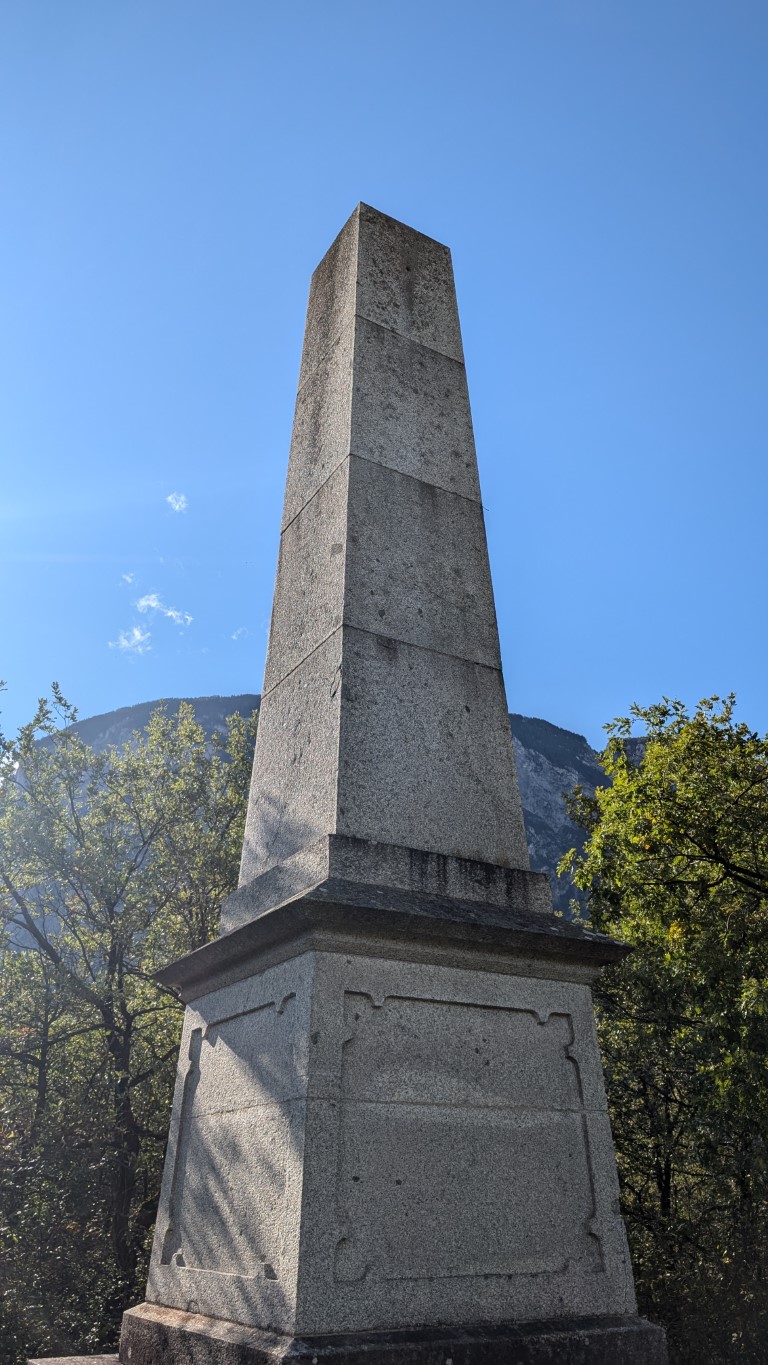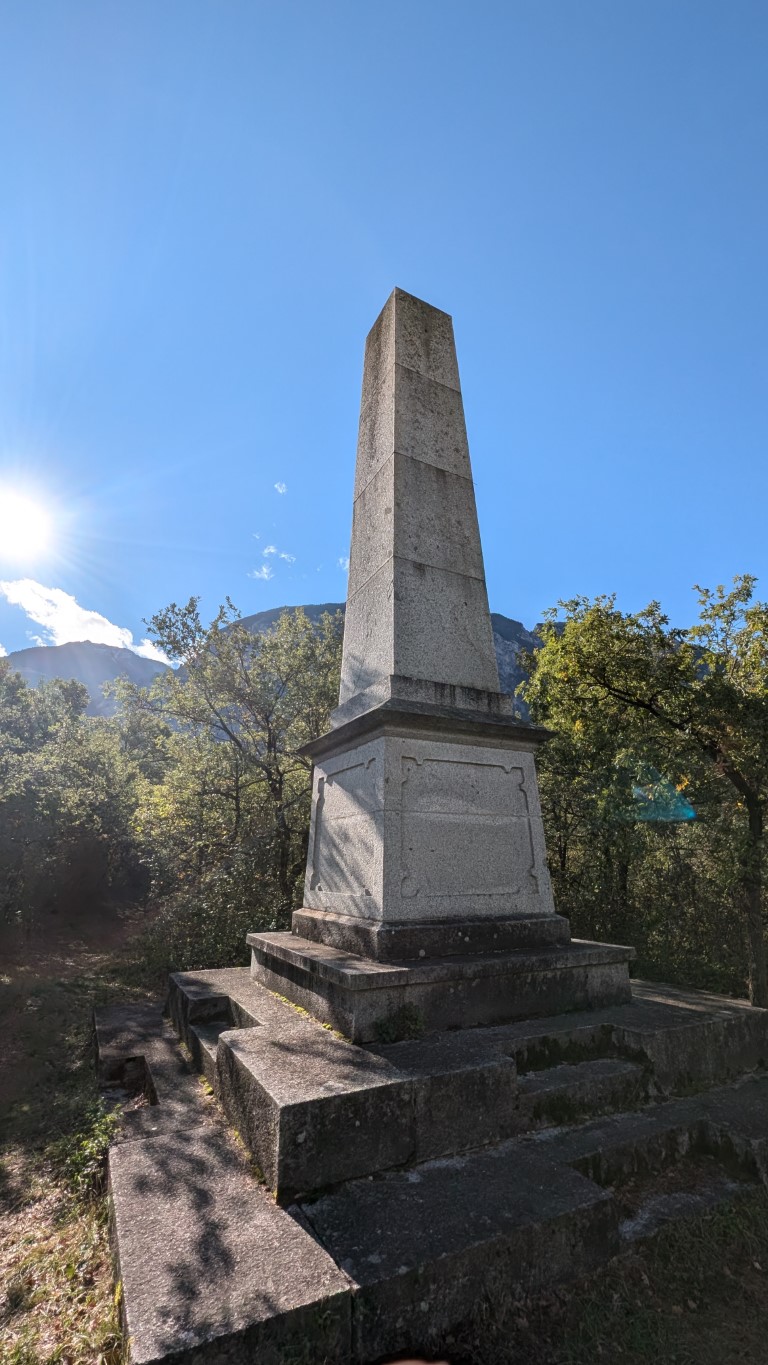In the heart of the Pfyn forest, nestled between the green treetops and the history of the Valais, stands a simple obelisk commemorating the battles of 1799. This monument was erected not only as a memorial to the fallen men who gave their lives for God and country, but also as a reminder to future generations to preserve the values of freedom and faith.
The impetus for this patriotic tribute came from Canon Imesch, who proposed at the annual meeting of the Upper Valais History Society in October 1897 that the 100th anniversary of the battles in the Pfynwald should be celebrated appropriately. His idea was quickly met with enthusiastic approval. But it was not just a simple memorial service. A ceremony was planned that went far beyond the usual in its size and significance: a monument was to be erected, accompanied by a solemn remembrance service and a specially composed hymn, the "Valais Freedom Song" by Leo Luzian von Roten. This patriotic song, which begins with the words "Let a song of thanks be heard high / To the men who fell in hot battle / For God and fatherland / Crushed by raw superiority", was later also accompanied by music.
Preparations for this monumental event lasted for two years, until the monument was finally unveiled on May 22, 1899. Master builder Kalbermatten from Sion designed the simple obelisk, which was built by the Tamini brothers in Monthey. Despite adverse weather conditions, people flocked to Pfyn in droves, many of them in festive costumes and carrying flags. Three special trains brought visitors from Sion and Brig to Susten to take part in the celebration. It was an event that was recorded in the chronicles as "a patriotic celebration such as had never been seen in living memory."
The celebrations were accompanied by moving speeches. Pastor Brindlen from Glis and Canon Bagnoud gave sermons in the national languages, while President of the Council of State H. de Torrente, National Councilor A. Perrig and other important personalities honored the sacrifice of the fallen fighters. The commemorative publication for the event was published on time, and the Roten freedom song became anchored in the hearts of the Valais people.
The simple yet imposing obelisk bears, in addition to the sign of the cross, an impressive inscription that inspires the viewer to reflect:
Our Fathers 1799
MAIORUM UM PRO ARIS PATRIISQUE FOCISMORIENTUM SIS MEMOR ET PATRIAM MACTE TUERE NEPOS
The words remind descendants to honor the legacy of their fathers who died for their faith and their homeland. Translated, the second part of the inscription reads: "You, descendant, remember your ancestors who died for their faith and their fathers' flocks, and protect your homeland!"
Since that memorable day in 1899, commemorations have been held in Pfyn to keep the memory of the freedom struggles alive. A stone bench next to the base of the monument commemorates one of these celebrations.
A memorial for the present
The obelisk in the Pfynwald is more than just a monument to past heroic deeds. It is a memorial that reminds us today that the values of freedom, faith and homeland must always be defended. At a time when these values are increasingly being questioned, the Pfyn obelisk could once again gain importance - as a sign that the fight for good never ends.
Today, the memorial is almost forgotten. The path is overgrown and the monument is being reclaimed by nature. The lively history of the Pfynwald is still palpable.
The Murderer Stone in the Pfynwald
Deep in the dense forest between Sierre and Leuk, on the sun-drenched side of the Rhone Valley, lies the legendary Pfynwald. There rises a split rock face, the "Murder Stone", whose grim name comes from an ancient, harrowing legend: once, so the story goes, a murderer attacked a child who was walking alone through this forest. In front of the mighty rock, which was still intact at the time, he asked the child cruel questions: "What is more beautiful than the day?" The child answered innocently: "The look of the mother."
"What is more precious than gold?" the murderer asked. "The mother's heart," replied the child.
“What is sweeter than honey?” “Mother’s milk.”
“What is softer than down?” “Mother’s womb.”
“What is more powerful than death?” “The love of a mother.”
Finally, the murderer asked, "What is harder than stone?" And the child, without fear, answered, "The murderer's heart."
Filled with blind rage, the murderer grabbed the child and hurled him against the rock with such force that it shattered. To this day, the crack in the "murderer's stone" remains - a silent witness to this dark crime.
Access
From the Monument campsite, a thicket-covered path leads to the obelisk.








